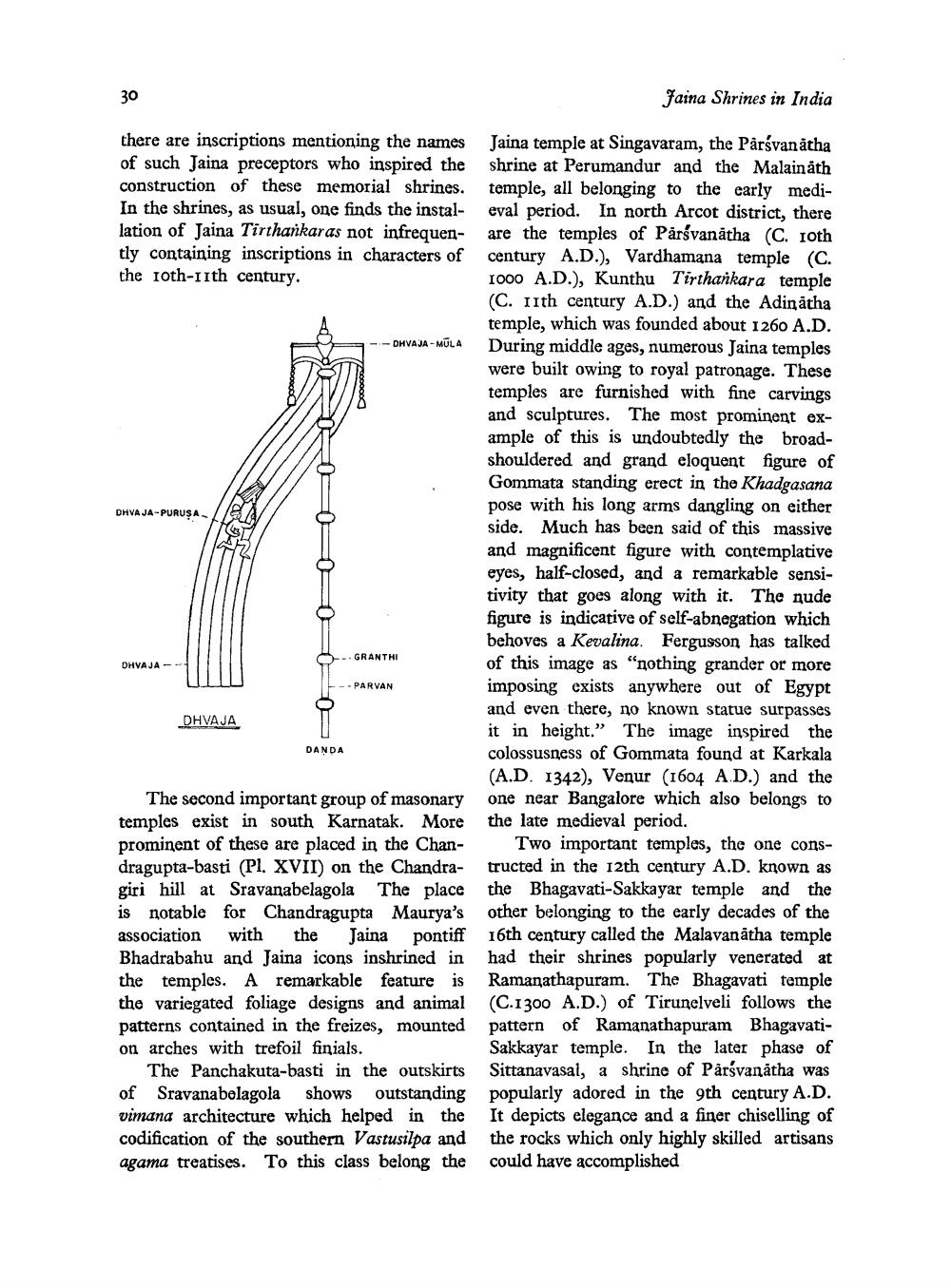________________
30
Faina Shrines in India
ne
DHVA JA-PURUSA
there are inscriptions mentioning the names Jaina temple at Singavaram, the Parsvanatha of such Jaina preceptors who inspired the shrine at Perumandur and the Malainath construction of these memorial shrines. temple, all belonging to the early mediIn the shrines, as usual, one finds the instal- eval period. In north Arcot district, there lation of Jaina Tirthankaras not infrequen- are the temples of Pärśvanátha (C. roth tly containing inscriptions in characters of century A.D.), Vardhamana temple (C. the roth-IIth century.
1000 A.D.), Kunthu Tirthankara temple (C. Inth century A.D.) and the Adinatha
temple, which was founded about 1260 A.D. -.-DHVAJA-MULA During middle ages, numerous Jaina temples
were built owing to royal patronage. These temples are furnished with fine carvings and sculptures. The most prominent example of this is undoubtedly the broadshouldered and grand eloquent figure of Gommata standing erect in the Khadgasana pose with his long arms dangling on either side. Much has been said of this massive and magnificent figure with contemplative eyes, half-closed, and a remarkable sensitivity that goes along with it. The nude figure is indicative of self-abnegation which behoves a Kevalina. Fergusson has talked of this image as "nothing grander or more imposing exists anywhere out of Egypt
and even there, no known statue surpasses DHVAJA
it in height." The image inspired the colossusness of Gommata found at Karkala
(A.D. 1342), Venur (1604 AD.) and the The second important group of masonaryone near Bangalore which also belongs to temples exist in south Karnatak. More the late medieval period. prominent of these are placed in the Chan- Two important temples, the one consdragupta-basti (Pl. XVII) on the Chandra- tructed in the 12th century A.D. known as giri hill at Sravanabelagola The place the Bhagavati-Sakkayar temple and the is notable for Chandragupta Maurya's other belonging to the early decades of the association with the Jaina pontiff 16th century called the Malavanātha temple Bhadrabahu and Jaina icons inshrined in had their shrines popularly venerated at the temples. A remarkable feature is Ramanathapuram. The Bhagavati temple the variegated foliage designs and animal (C.1300 A.D.) of Tirunelveli follows the patterns contained in the freizes, mounted pattern of Ramanathapuram Bhagavation arches with trefoil finials.
Sakkayar temple. In the later phase of The Panchakuta-basti in the outskirts Sittanavasal, a shrine of Pärsvanātha was of Sravanabelagola shows outstanding popularly adored in the 9th century A.D. vimana architecture which helped in the It depicts elegance and a finer chiselling of codification of the southern Vastusilpa and the rocks which only highly skilled artisans agama treatises. To this class belong the could have accomplished
- GRANTHI
DHVAJA
--- PARVAN




